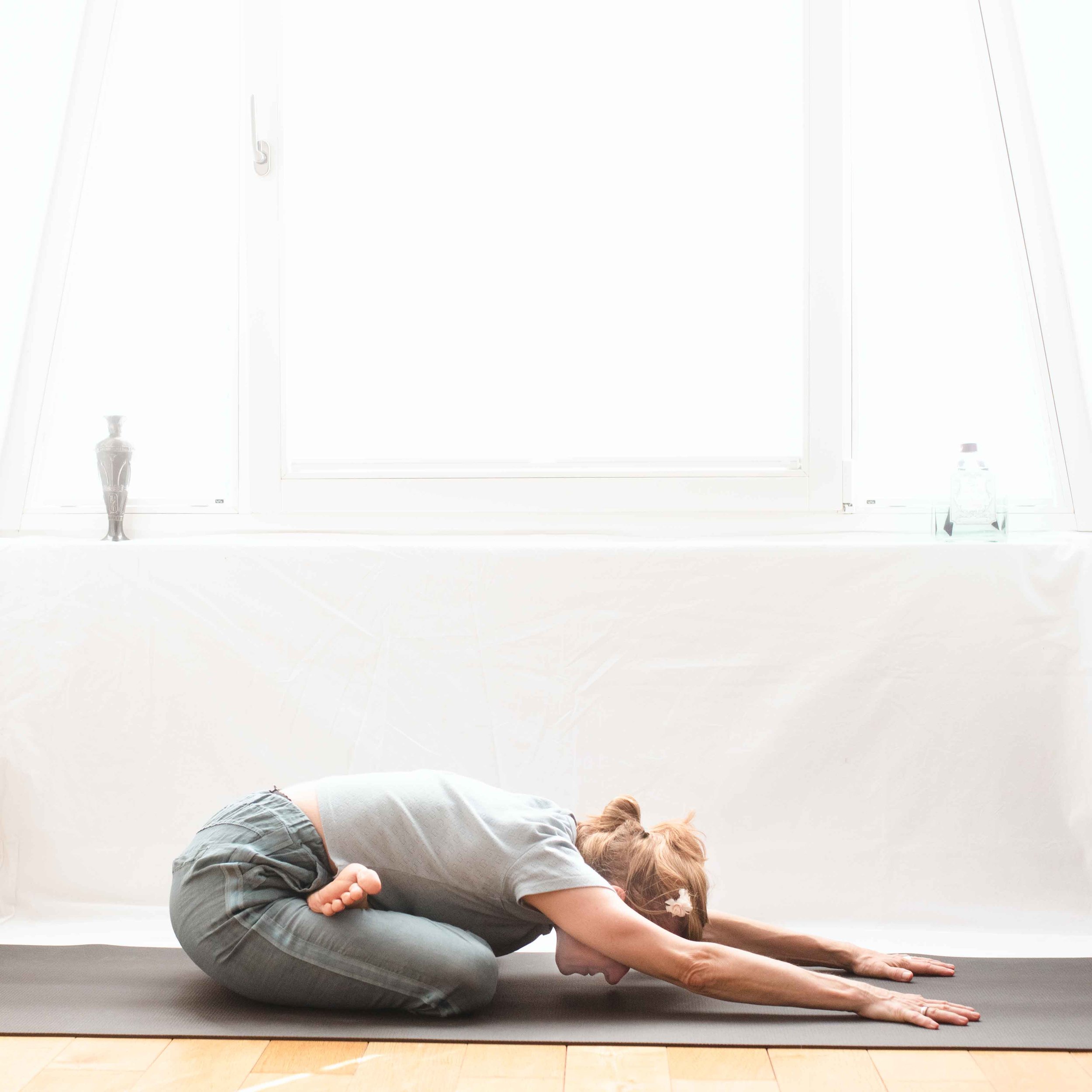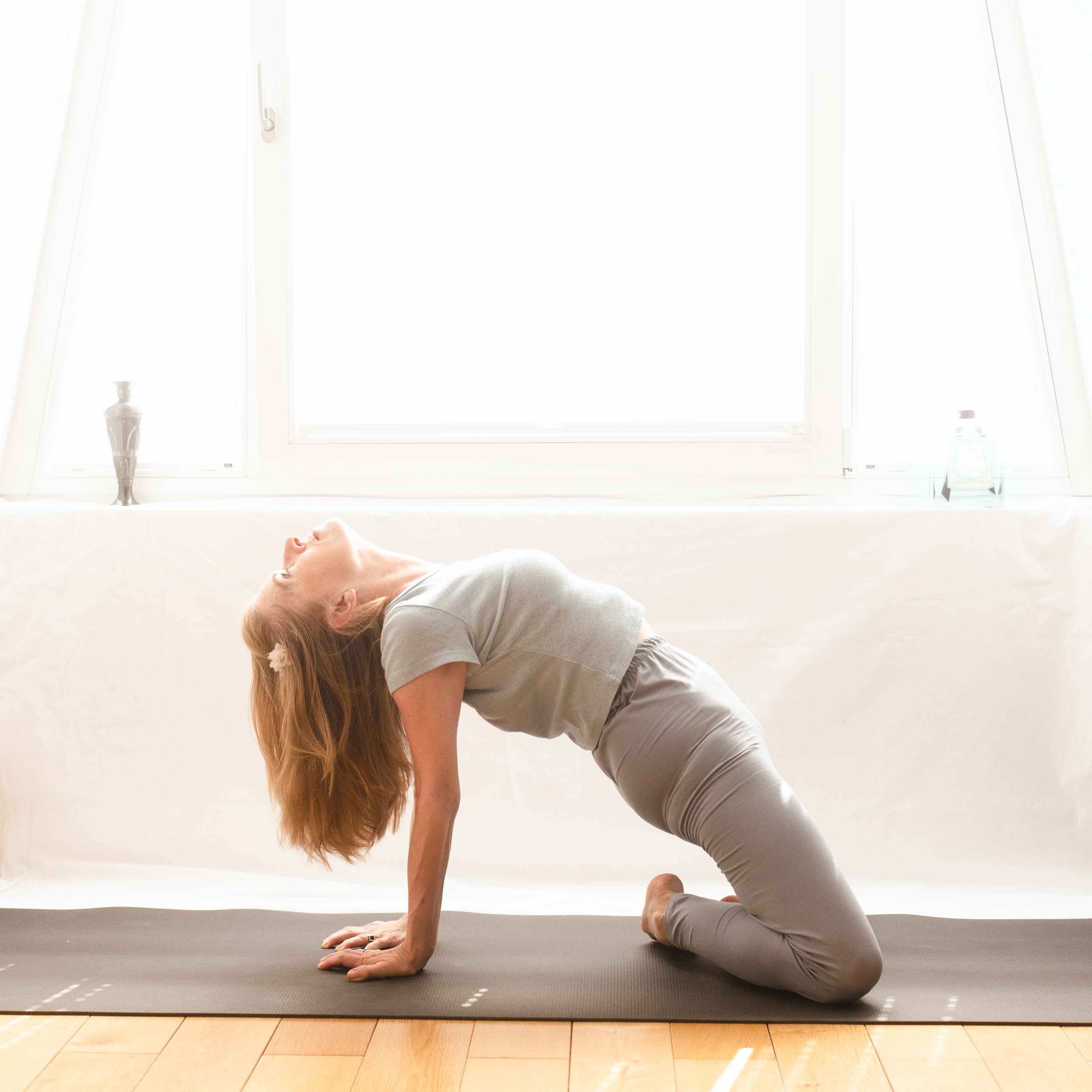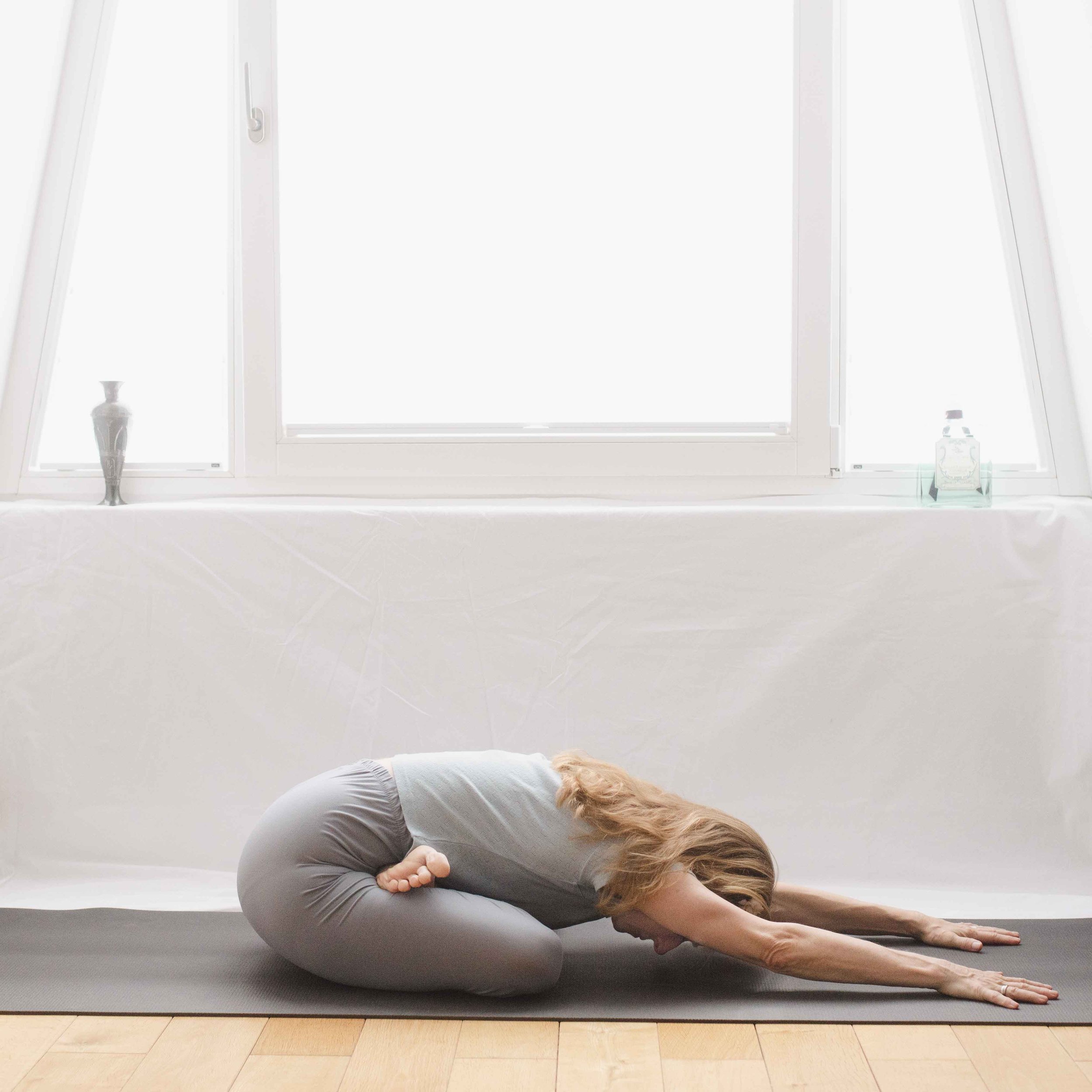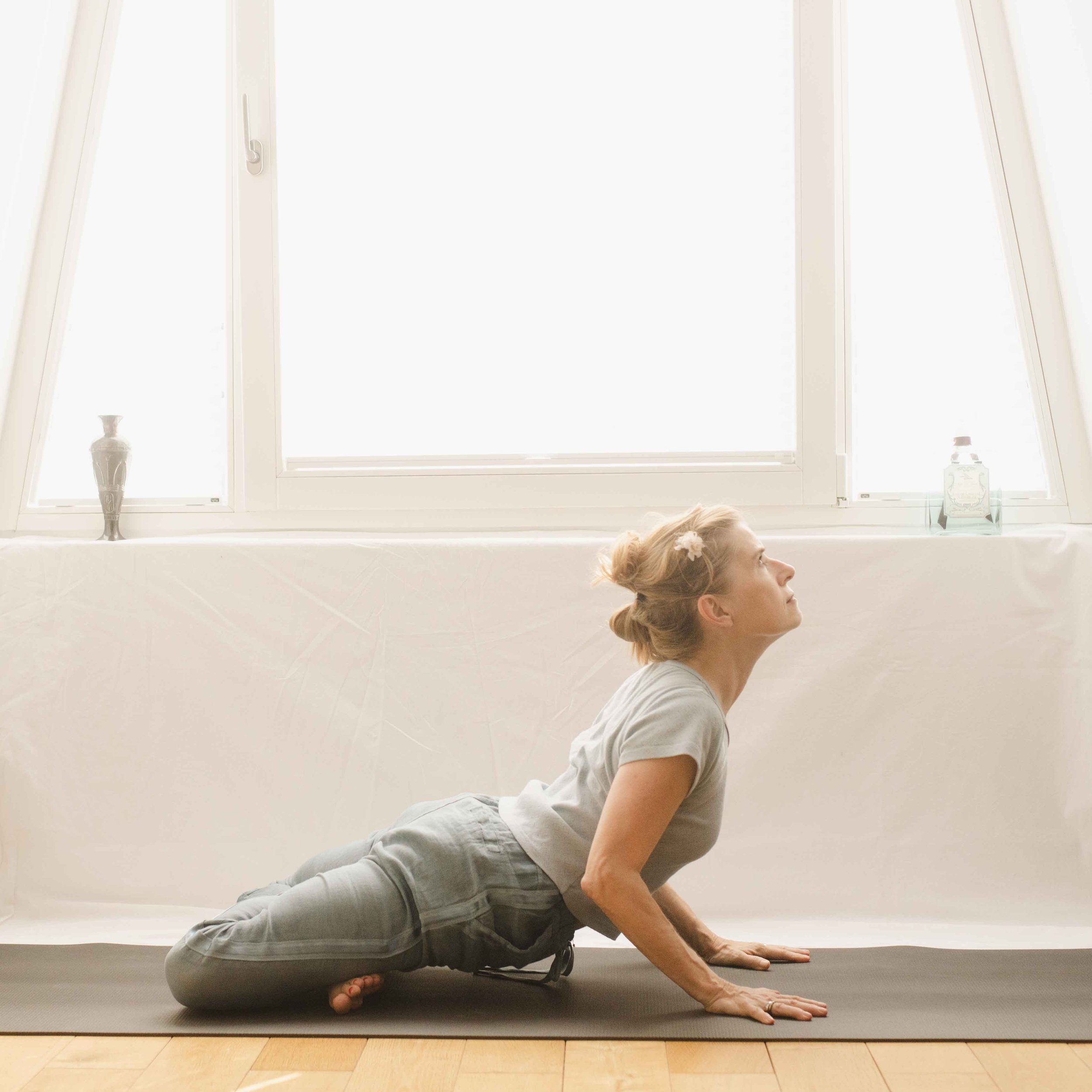Counter poses after back bending.
Forward bending asana, September 2022
On Sundays, Mondays, Tuesdays and Thursdays I focus on back bending. The last practices were rather intensive. On Tuesday I realised that my sacroiliac joint was not so content. I felt a slight discomfort. I had to take care not to do the tiniest awkward asana.
Today I practiced forward bending asanas. And all seemed OK again. The body needs balance.
For me it’s good advise to practice forward bending asanas after having exercised deep back bending asanas. It relaxes the back. It balances the entire practice. It’s not about bending backward for 90 minutes.
Twists and forward bending asanas relax the spine again after deep back bending asanas.
I’ll take care of this even more from now on. If one is attentive, the body gives messages.
To practice primary Ashtanga on Wednesdays and Fridays seems to be very good. The body needs time to integrate new movements. It counter balances the days on which I focus on back bending.
It’s not about progressing as fast as possible. I want to avoid injuries.
Working on the core muscles also protects the back.
Counter poses are not boring. They can be very relaxing.
Paschimottanasana after urdhva dhanurasana was often too much for me as a counter movement. The back hurt. These days I move slowly into forward bending asanas.
Hanging forward is great. Baby pose is great. Also a simple squat pose helps to relax the back again. After these easier forward bending asanas my body is ready for paschimottanasana.
I learn to protect myself.
Take care.
You'll get out of your practices what you put in.
Consistency is a key word. That means success comes when you practice regularly whatever it is. It’s not only time that one can put into a practice. It can also be intensity, concentration, the right mindset, passion. intelligence. Work harder than smarter is true, too. In order to know what smarter is one has to study the practice. Experience and knowing oneself helps to understand and to judge methods and tips and tricks. It’s necessary to study the asana and the own strength and weaknesses in order to move forward in a steady way.
It’s recommended to study the art of yoga by oneself. The own practice is an excellent source. These days it’s also possible to find excellent teacher online. Books and podcasts are another source.
The pictures show two back bending asanas and one forward bending asana. It’s one of the rules that I follow: After an intensive back bending comes a soft forward bending asana or a twist. This balances the body again. It’s also relaxing and calms the nervous system.
Time that I put into my practice:
Ideally 9 hours of Ashtanga Yoga (first and second series) in the morning.
I watch YouTube Videos and tutorials on Omstars.
I scroll through my Instagram account from time to time. It motivates me to see all these diligent yogis. Sometimes it’s the kick that I need before a morning practice.
I write this blog again. It motivates me and documents my yoga journey.
When I started with Ashtanga Yoga my only source was the book by David Swenson ‘Ashtanga Yoga’.
My yoga week has started with an intensive practice. Keep practicing.



